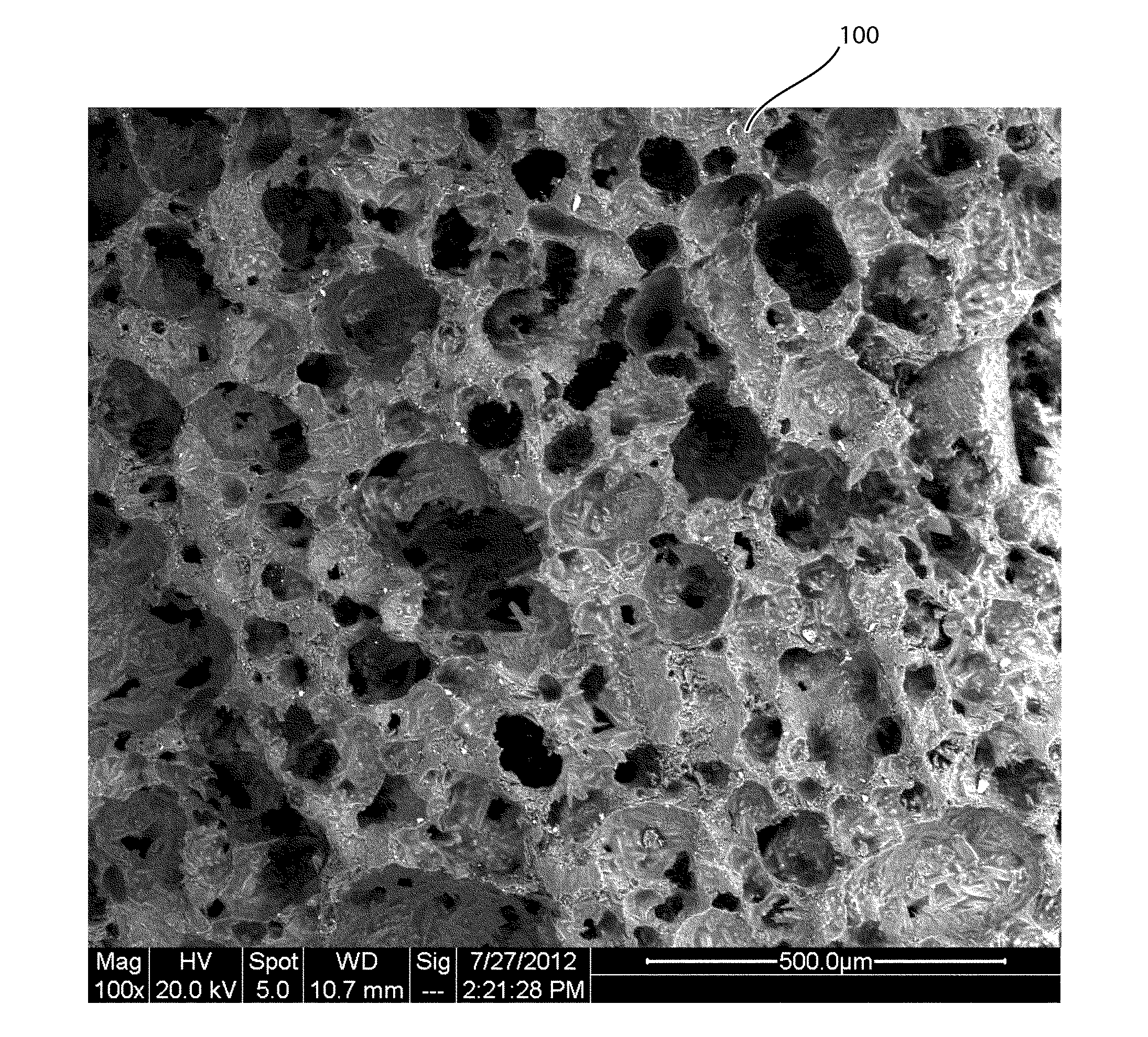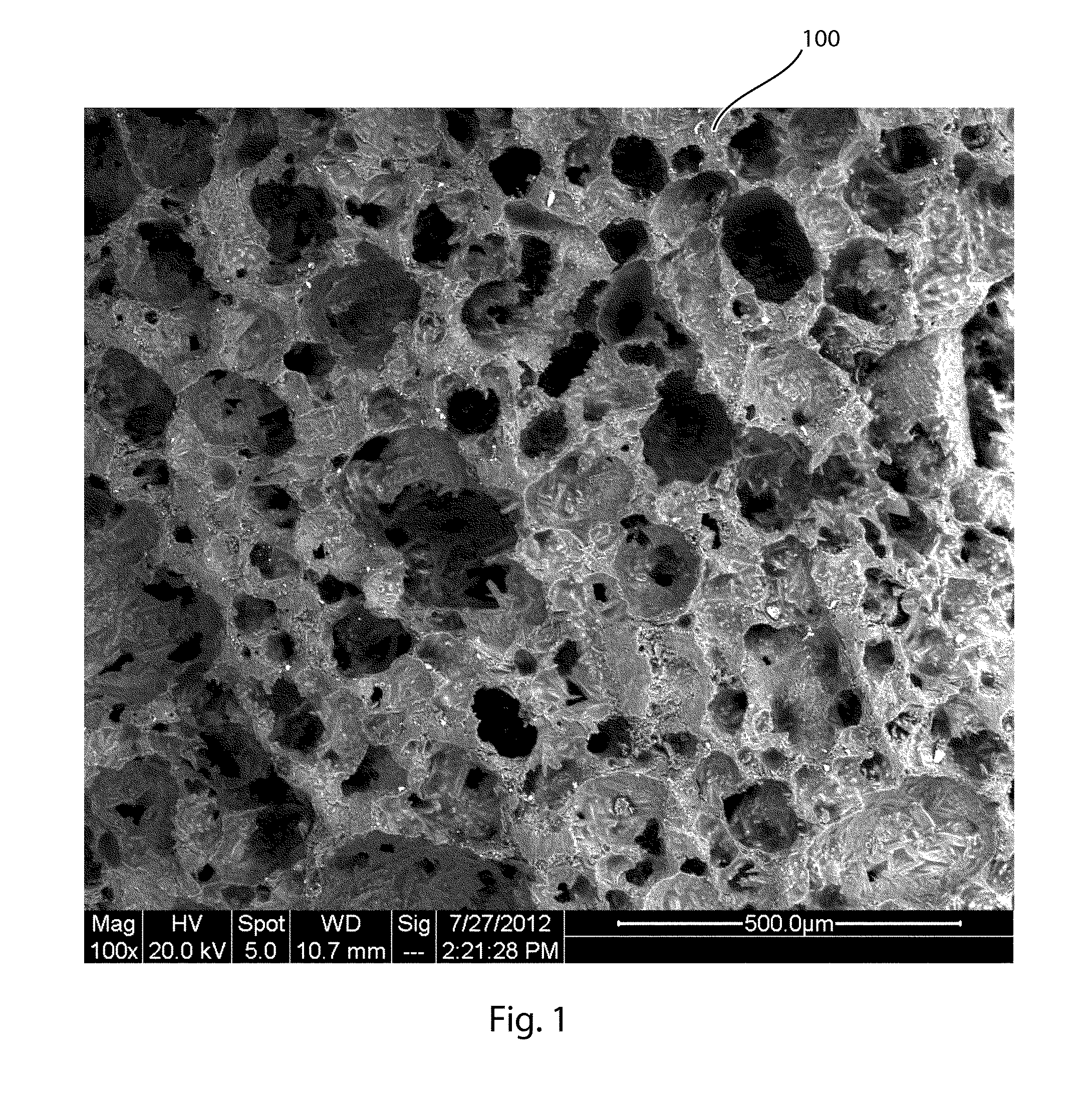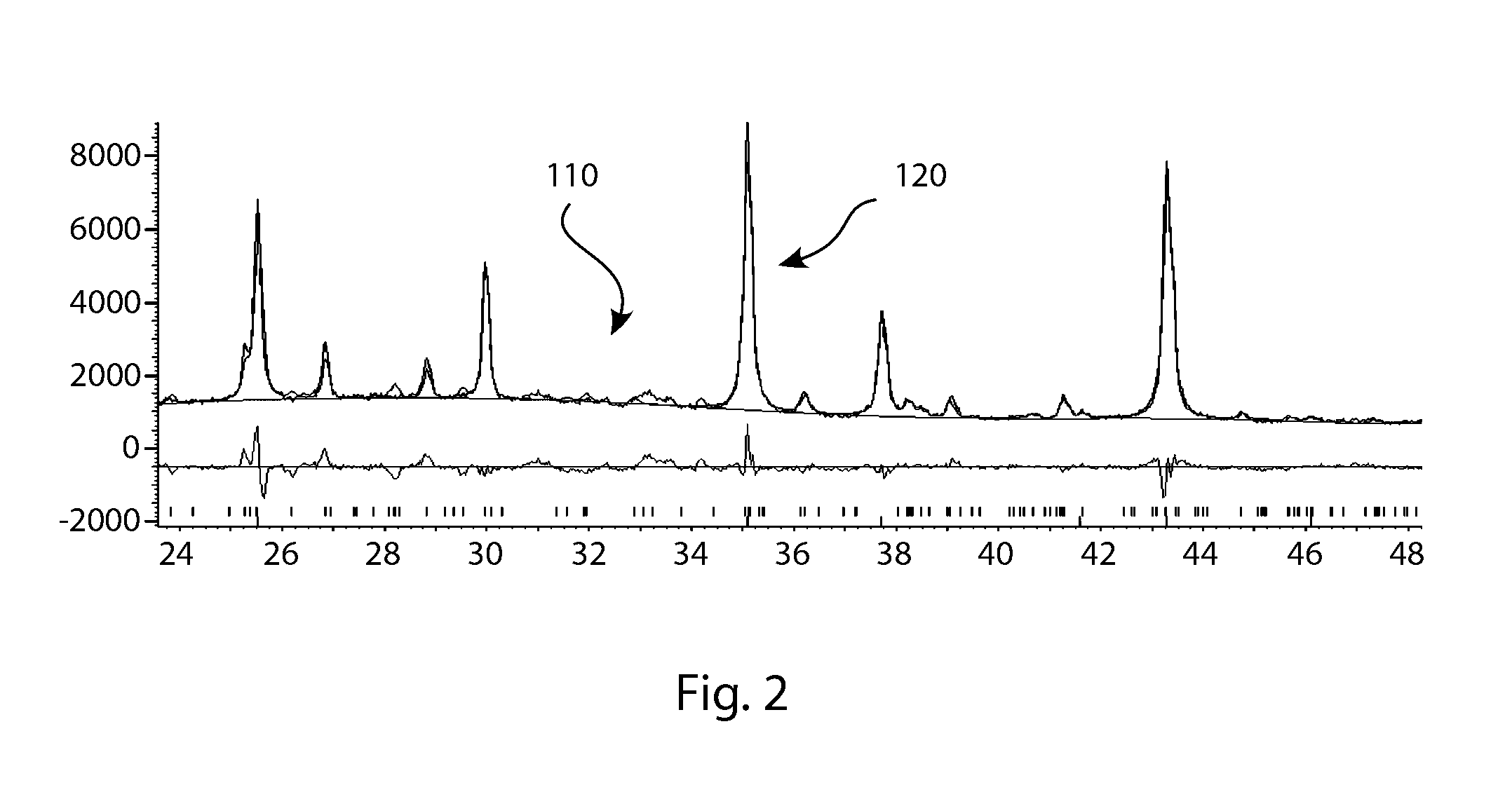Devices and Methods for Tissue Engineering
a tissue engineering and implant technology, applied in the field of osteostimulative medical implants, can solve the problems of loose fixation and limited application of such devices, and achieve the effects of promoting tissue ingrowth, high strength and greater strength
- Summary
- Abstract
- Description
- Claims
- Application Information
AI Technical Summary
Benefits of technology
Problems solved by technology
Method used
Image
Examples
Embodiment Construction
[0017]The present invention provides a bioresorbable medical device and implant for the repair of bone defects that is bioresorbable, osteostimulative, and exhibiting load bearing strength upon implantation. The present invention provides a bioresorbable (i.e., resorbable) tissue scaffold of bioactive glass-ceramic fiber composition having an osteostimulative porous structure. The porous structure has interconnected pore space with a pore size distribution in the range of about 10 μm to about 600 μm with porosity between 20% and 85% to provide osteoconductivity once implanted in bone tissue. Embodiments of the present invention include pore space in the range of about 40 μm and about 600 μm.
[0018]Various types of synthetic implants have been developed for tissue engineering applications in an attempt to provide an implantable device that mimics the properties of natural bone tissue and promotes healing and repair of tissue. Metallic and bio-persistent structures have been developed ...
PUM
| Property | Measurement | Unit |
|---|---|---|
| porosity | aaaaa | aaaaa |
| compressive strength | aaaaa | aaaaa |
| pore size | aaaaa | aaaaa |
Abstract
Description
Claims
Application Information
 Login to View More
Login to View More - R&D
- Intellectual Property
- Life Sciences
- Materials
- Tech Scout
- Unparalleled Data Quality
- Higher Quality Content
- 60% Fewer Hallucinations
Browse by: Latest US Patents, China's latest patents, Technical Efficacy Thesaurus, Application Domain, Technology Topic, Popular Technical Reports.
© 2025 PatSnap. All rights reserved.Legal|Privacy policy|Modern Slavery Act Transparency Statement|Sitemap|About US| Contact US: help@patsnap.com



